Diesel Service Report, March 28, 2022
UP942, EMD E8 Locomotive
UP942 has two Diesel engines. The forward engine powers the front truck, and the rear engine powers the rear truck. The locomotive was built for high-speed passenger service and had a horsepower rating of 2250. Each engine was capable of 1125 horsepower. But that horsepower rating is when the engines are running at full power. When they are operating at that high load level, the exhaust has a very high velocity and is very hot. Since the engines are 2 cycle engines, they are prone to having lubricating oil leak into the combustion chambers. When that happens, the liquid oil isn’t atomized and won’t burn unless the engine is hot and working hard.
At the museum, the engines never get hot, and the exhaust velocity is always minimal. And the result is that black lube oil droplets get blown out the exhaust stack and settle all over the locomotive and anyone or anything in the immediate area. There is nor cheap cure for this. It would take new piston rings and cylinder liners to make any impact on it.
Our solutions aren’t perfect, but they are affordable and help control the problem. We have two things that we do to help minimize the problem. The first is that when loose oil has built up in the exhaust system, we connect each engine, one at a time, to our “load bank”. The load bank is a group of very high-power resistors that dissipate the horsepower heat without moving the locomotive.
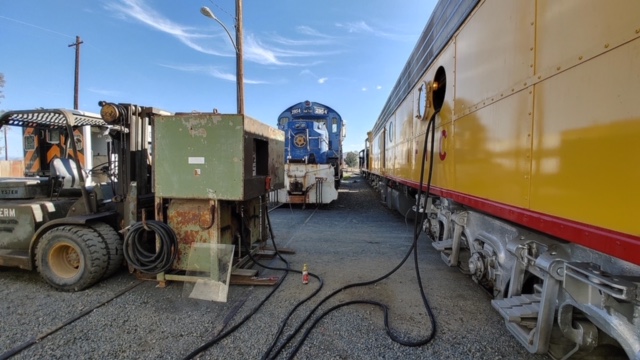
The engines can then be operated at full power for a short time.That high power operation heats up the exhaust and burns off any loose oil and dries it out. The second thing that will be done will be to operate the locomotive using just one of the two engines. It doesn’t require over 2000 horsepower to move a few passenger cars at the museum. That will save fuel and help limit the amount of loose oil that gets blown out the exhaust stack.
This (right) shows UP942 connected to the load bank for high power testing.
UP942, EMD E8 Locomotive
The Diesel engine and electric propulsion system have now been tested to the point that we are confident that the locomotive will be able to be used at the museum for regular service. We may have a few limitations on its use but won’t know what those might be until after we use it in regular service for a while.
Now we will begin the process of cleaning it up and getting it ready for painting. But before that happens, we need to inspect the trucks to make sure everything is OK with them. To do that inspection, the trucks needed to be removed from under the locomotive. That work was done last Saturday. We had almost our full team of Diesel Service volunteers on-hand for that effort. They were Tom Platten, Tim Johnson, Bob Bray, Frank Kunsaitis, Corey Wilde, Doug Newberry, John Salvini, and Carl Pickus. 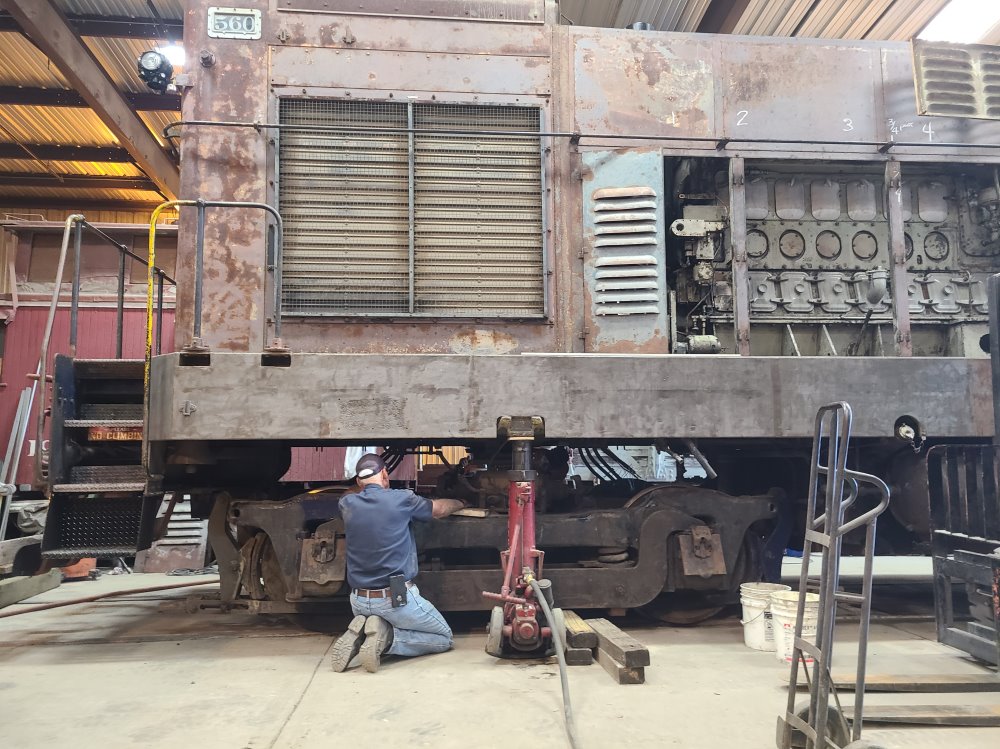 The locomotive was jacked high enough to pull both trucks out from under it. Then cribbing was constructed under the locomotive and the jacks lowered until a portion of the weight rested locomotive side bearings on the cribbing. The rest of the weight then still resides on the four jacks. The stability of the locomotive is assured by having it rest level and equally on eight different places. The jacks will stay under the locomotive until later this year when the trucks are refurbished and ready to put back under the locomotive.
The locomotive was jacked high enough to pull both trucks out from under it. Then cribbing was constructed under the locomotive and the jacks lowered until a portion of the weight rested locomotive side bearings on the cribbing. The rest of the weight then still resides on the four jacks. The stability of the locomotive is assured by having it rest level and equally on eight different places. The jacks will stay under the locomotive until later this year when the trucks are refurbished and ready to put back under the locomotive.
This (right) shows one of the four jacks as we were ready to start lifting the locomotive body off the trucks.
Carl and Doug had removed the rear steps from the locomotive to provide clearance for the trucks to roll out from underneath. Once the locomotive was jacked high enough, the clearance was about two inches. And the side clearance between the axle journal box covers and the jacks was an inch or two at the most.
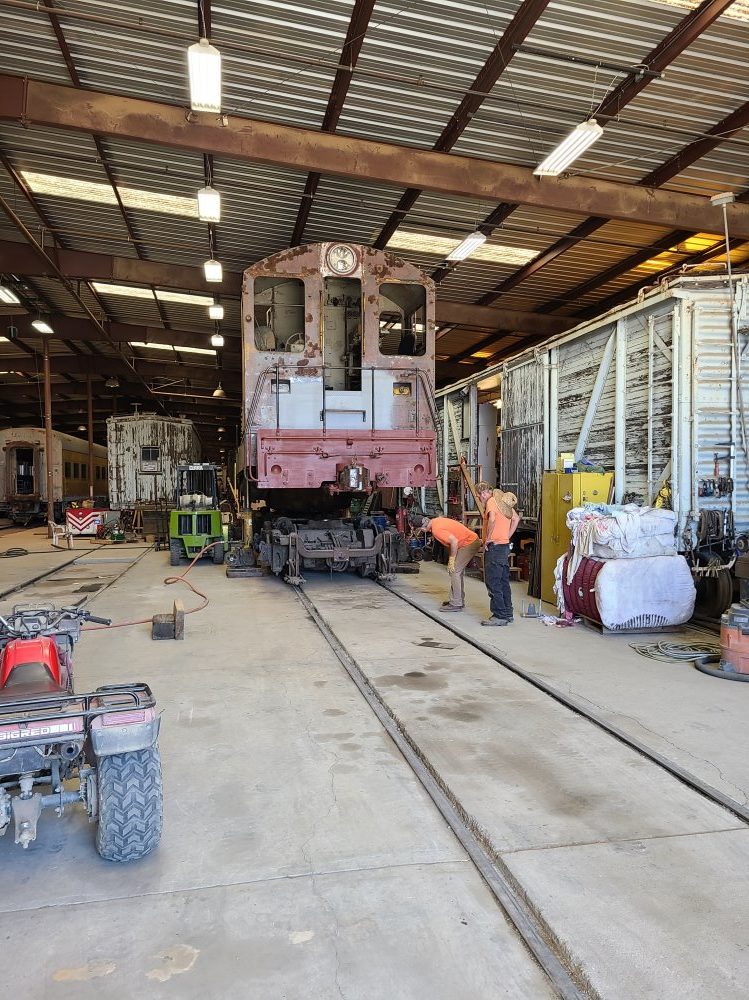
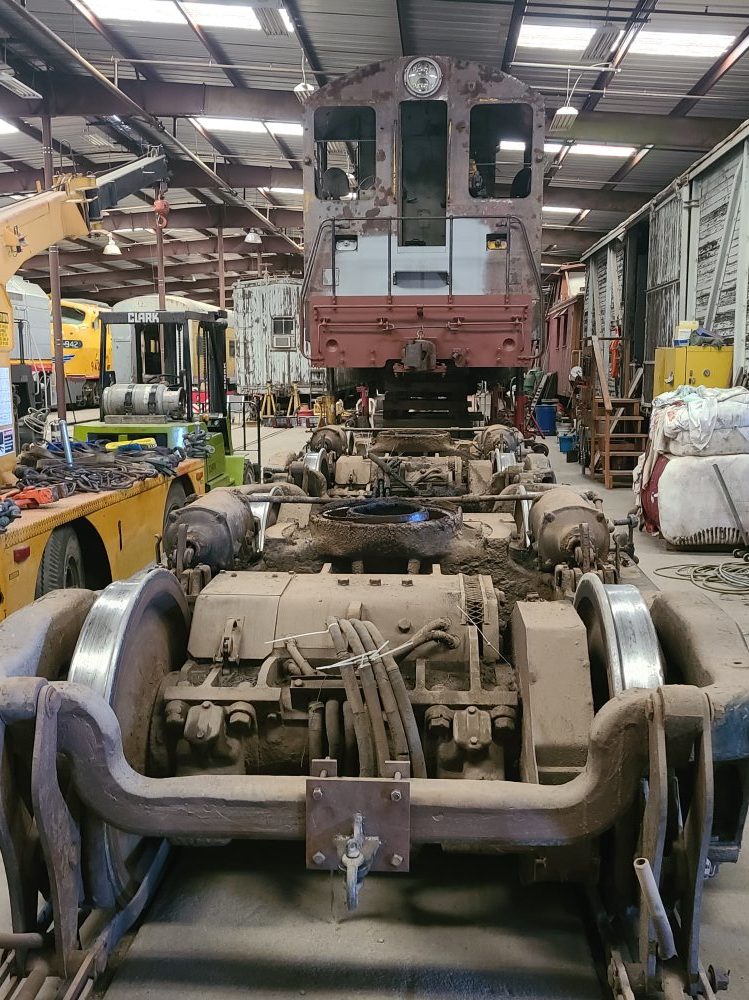
Then the two trucks were chained together and Carl pulled them out from under the locomotive using his Deck Crane. The two trucks will now stay in this position in Carbarn 7 for a number of months while they are cleaned, inspected, repaired, and painted.
There is an amazing amount of dried mud everywhere under the locomotive and on the trucks. Tom worked for about an hour cleaning the trucks and removed about 30 lbs of dirt and it didn’t make hardly a dent in what still must be done.
This picture shows a typical area around the axle support bearing caps.
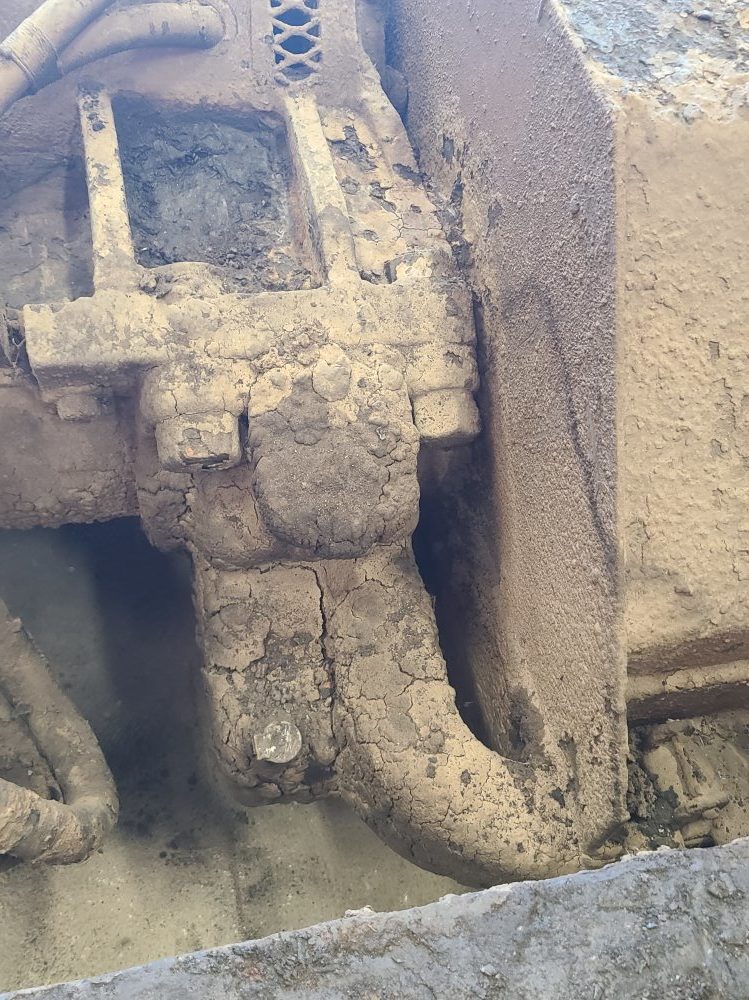
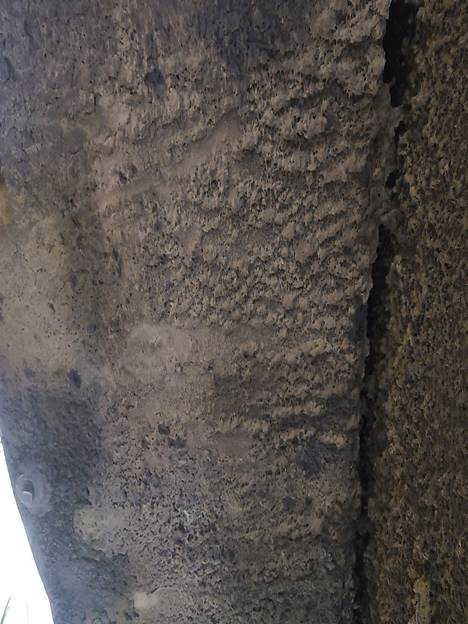 This shows the rear wall of the fuel tank. The buildup is at least an inch thick if not more. All of that must be chiseled off down to bare metal. And much of the underside of the locomotive looks just like that.
This shows the rear wall of the fuel tank. The buildup is at least an inch thick if not more. All of that must be chiseled off down to bare metal. And much of the underside of the locomotive looks just like that.
So, we have our work cut out for us for the next number of months cleaning everything.
During that time, Bob and Tim will rebuild the three duplex brake cylinders that are still left to be done. They rebuilt one before the trucks were removed but it was extremely difficult to do with the trucks under the locomotive.
This shows Bob and Tim as they were working on the first cylinder a few months ago.
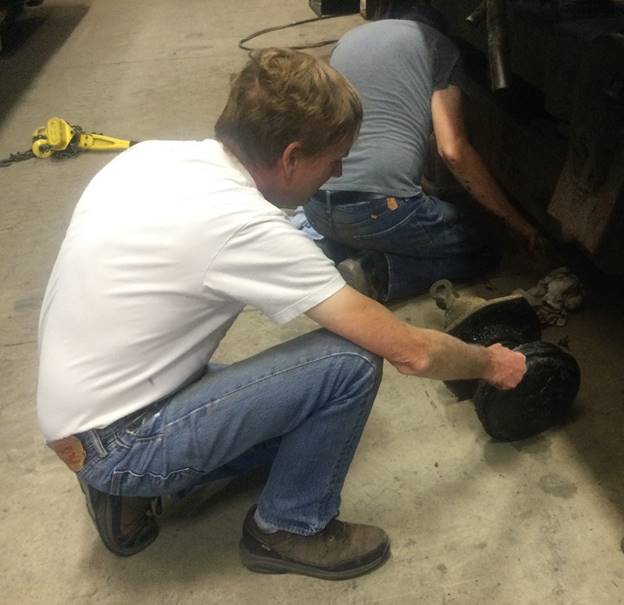
– Dave Althaus

